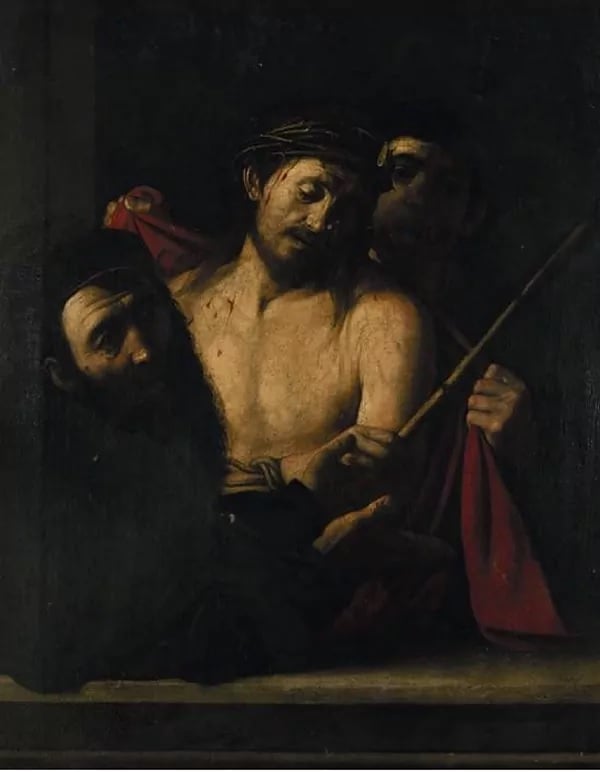Law & Politics
This Painting Was About to Hit the Auction Block in Spain for Just $1,780. Then Experts Discovered It Might Be a Caravaggio Worth Millions
Spain's culture ministry implemented an export ban on the painting to halt the sale.

Spain's culture ministry implemented an export ban on the painting to halt the sale.

Taylor Dafoe

The culture ministry of Spain has blocked the auction of a 17th-century painting after experts suggested it may have been made not by a follower of Caravaggio, as previously thought, but by the Renaissance master himself.
The artwork in question, a 44-by-34-inch oil-on-canvas depiction of the of the Ecce Homo, in which Jesus Christ is presented in a crown with thorns before his crucifixion, has been attributed to a pupil of the Spanish artist José de Ribera, a follower of Caravaggio. Valued at a meager €1,500 ($1,780), it was set to hit the block today at the Ansorena auction house in Madrid.
But before the sale took place, the Spanish state implemented an export ban on the painting, a decision that came after experts at the Prado Museum said there was “sufficient stylistic and documentary evidence” to suggest it might have been done by Caravaggio himself, according to a statement from the ministry. Ansorena subsequently pulled the work from the sale.
If it is indeed the work of Caravaggio, it would likely be worth millions.
Cultura declara “inexportable” un cuadro que iba a subastarse en Madrid al sospechar que puede ser de Caravaggio via @el_pais https://t.co/gTmux5n7nw
— José Manuel Rodríguez Uribes (@jmrdezuribes) April 8, 2021
Representatives from the Prado delcined to comment when reached by Artnet News.
“Given the speed at which all this has been happening, we now need a thorough technical and scientific study of the painting in question,” a spokesperson from the culture ministry told the Guardian.
“There needs to be an academic debate about whether the Caravaggio attribution is plausible and accepted by the scientific community,” the source added.
A prominent painter of the Spanish school, de Ribera was born near Valencia, Spain in the late 1500s. By 1612, the young artist had relocated to Rome where he commenced a deep study of the work of Italian master Caravaggio and his followers at the Accademia di San Luca. (Whether or not de Ribera crossed paths with his icon, who died in 1610, is the subject of scholarly debate.)
Maria Cristina Terzaghi, Caravaggio expert at the University of Rome, was among the first to identify the painting, according to the Spanish news outlet El Pais. She booked a plane ticket to Madrid after being alerted to the auction by a friend. “It’s a Caravaggio,” she told the paper. “I have no doubts.” (Terzaghi did not immediately respond to an email from Artnet.)